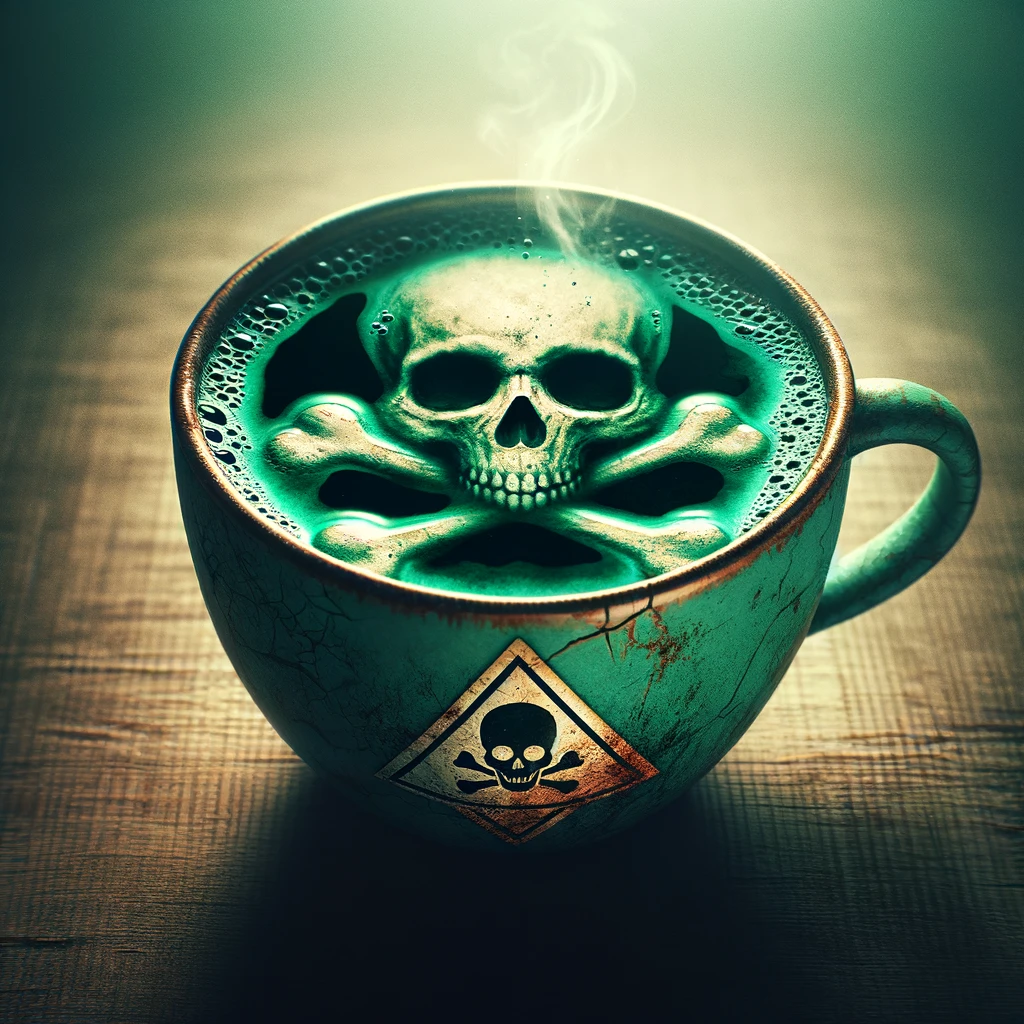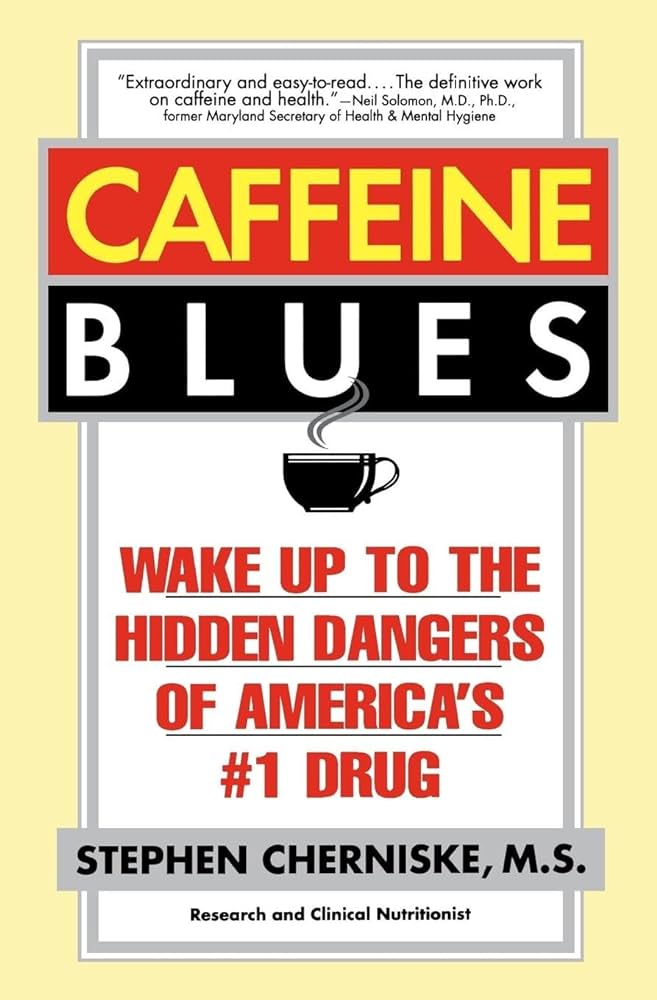TLDR: Don’t drink caffeine. It’s a chemical that gives you stress. It’s legal, because companies profit of it, but drinking it is not in your interest.
Just like how cigarettes, overprescribed drugs, sugary drinks, are sold to you to make profit.
I have given up drinking caffeine and it has definitely improved my life.
Previously I gave up:
- Alcohol
- Sugar
- Bread
- And now caffeine
I feel so much better, mainly for my sleep.
Here is what I learnt from the book: “Caffeine Blues“:
What’s not actually good for you? But is sold do you for profit:
There are several products, similar to cigarettes, overprescribed drugs, and coffee, that are widely sold for profit despite concerns about their impact on health. Some of these include:
- Alcoholic Beverages: While moderate consumption can sometimes be associated with certain health benefits, excessive alcohol use is a major risk factor for numerous health problems, including liver disease, cardiovascular issues, and an increased risk of various cancers.
- Sugary Drinks and Snacks: Products high in added sugars, like soft drinks, candies, and certain processed snacks, contribute to obesity, diabetes, and dental problems. Despite these health risks, they are heavily marketed and widely available.
- Processed Foods: Many processed foods contain high levels of salt, sugar, and unhealthy fats, contributing to heart disease, obesity, and other health issues. These foods are often cheaper and more accessible than healthier options, making them a staple in many diets.
- Energy Drinks: High in caffeine and sugar, these drinks can lead to heart palpitations, increased anxiety, sleep disturbances, and in extreme cases, serious heart issues.
- Tanning Beds: Linked to an increased risk of skin cancer, including melanoma, tanning beds are still used by many for cosmetic reasons.
- Vaping Products: Initially marketed as a safer alternative to smoking, vaping has been linked to lung injuries and other health risks, especially among younger users.
- Diet Pills and Supplements: Many over-the-counter weight loss supplements and diet pills are not rigorously tested for safety or efficacy and can have harmful side effects.
- Fast Food: Often high in calories, fats, sugars, and sodium, fast food consumption is linked to various health issues, including obesity, cardiovascular disease, and type 2 diabetes.
- Cosmetics and Personal Care Products: Some cosmetics contain harmful chemicals like parabens, phthalates, and lead, which can have various health impacts.
- Pesticides and Herbicides: Used in agriculture to improve crop yield, these chemicals can have residual effects on foods and have been linked to health issues in both farmworkers and consumers.
In each of these cases, the profitability of these products often drives their widespread availability and marketing, despite potential health risks. It’s important for consumers to be informed about these risks and to make choices that prioritize long-term health and well-being.
Caffeine Blues Book Summary
You can get the book on amazon here.
Caffeine Blues” is a book by Stephen Cherniske, a biochemist and nutritionist, that explores the impact of caffeine on human health. The central thesis of the book is that while caffeine is commonly consumed worldwide, primarily through coffee, tea, and soft drinks, it may have numerous negative effects on health that are often overlooked or misunderstood. Cherniske argues that caffeine can disrupt sleep, increase anxiety, contribute to heart problems, and lead to a cycle of energy highs and lows. He presents scientific research to support his claims, emphasizing how caffeine impacts the endocrine system, particularly the adrenal glands, leading to a state of chronic stress or adrenal exhaustion.
The book also addresses the addictive nature of caffeine and the challenges people face when trying to quit or reduce their caffeine intake. Cherniske offers practical advice for those looking to minimize their caffeine consumption, including a detoxification program designed to help people overcome caffeine dependence. The author’s goal is to provide readers with a comprehensive understanding of the potential risks associated with caffeine and to encourage a more mindful approach to its consumption. “Caffeine Blues” is often seen as a wake-up call, urging readers to reconsider their caffeine habits and to be more aware of how this ubiquitous substance affects their health and wellbeing.
Caffeine Blues – 15 Key Points
“Caffeine Blues” by Stephen Cherniske covers various aspects of caffeine’s impact on health. While the book contains numerous details and arguments, the main points can be summarized as follows:
- Caffeine as a Stimulant: The book begins by explaining how caffeine acts as a stimulant, affecting the central nervous system, and altering mood, perception, and behavior.
- Addiction and Withdrawal: Cherniske discusses how caffeine is addictive and can lead to physical dependence, with withdrawal symptoms like headaches, irritability, and fatigue.
- Impact on Sleep: One of the key points is how caffeine disrupts sleep patterns, leading to reduced sleep quality and potential long-term sleep issues.
- Effects on the Endocrine System: The book delves into how caffeine impacts the endocrine system, particularly the adrenal glands, potentially leading to adrenal exhaustion.
- Mental Health Implications: Cherniske links caffeine consumption to increased anxiety and potential exacerbation of other mental health issues like depression.
- Cardiovascular Effects: The author highlights the risk of increased heart rate and blood pressure, and the potential for caffeine to contribute to heart problems.
- Nutritional Effects: The book explores how caffeine can affect nutrient absorption and metabolism, potentially leading to nutritional deficiencies.
- Impact on Stress Levels: Caffeine’s role in increasing the body’s stress response, leading to higher levels of stress hormones like cortisol, is a significant point.
- Cycle of Energy Highs and Lows: Cherniske explains how caffeine leads to a cycle of energy spikes followed by crashes, contributing to overall lower energy levels in the long term.
- Caffeine and Health Risks: The book discusses various health risks associated with caffeine, including its potential link to certain types of cancers, osteoporosis, and reproductive issues.
- Social and Economic Aspects: Cherniske also touches on the social and economic dimensions of caffeine consumption, including its widespread acceptance and use in the workplace.
- Detoxification and Quitting Caffeine: A significant portion of the book is dedicated to strategies for reducing caffeine consumption and detoxifying the body from its effects.
- Alternatives to Caffeine: The author suggests healthier alternatives to caffeine for energy and alertness.
- Critique of the Coffee Industry: Cherniske offers a critique of the coffee industry, comparing it to the tobacco industry in terms of downplaying health risks.
- Empowerment Through Education: Lastly, the book aims to empower readers with information to make informed choices about their caffeine consumption.
These points collectively offer a comprehensive overview of the potential negative impacts of caffeine on health, as presented in “Caffeine Blues.”
Read the Book
You can read the book here:
https://archive.org/details/caffeineblueswak0000cher/page/n9/mode/2up
Or buy it from Amazon! Well worth it!


Pingback: 37 Benefits of Drinking Ginger Tea - Richard Coward
Coffee is one of life’s little pleasures.
Pingback: How to quit coffee in 9 steps - Richard Coward